Intel Releases DC P4510 SSDs, Up To 8TB NVMe
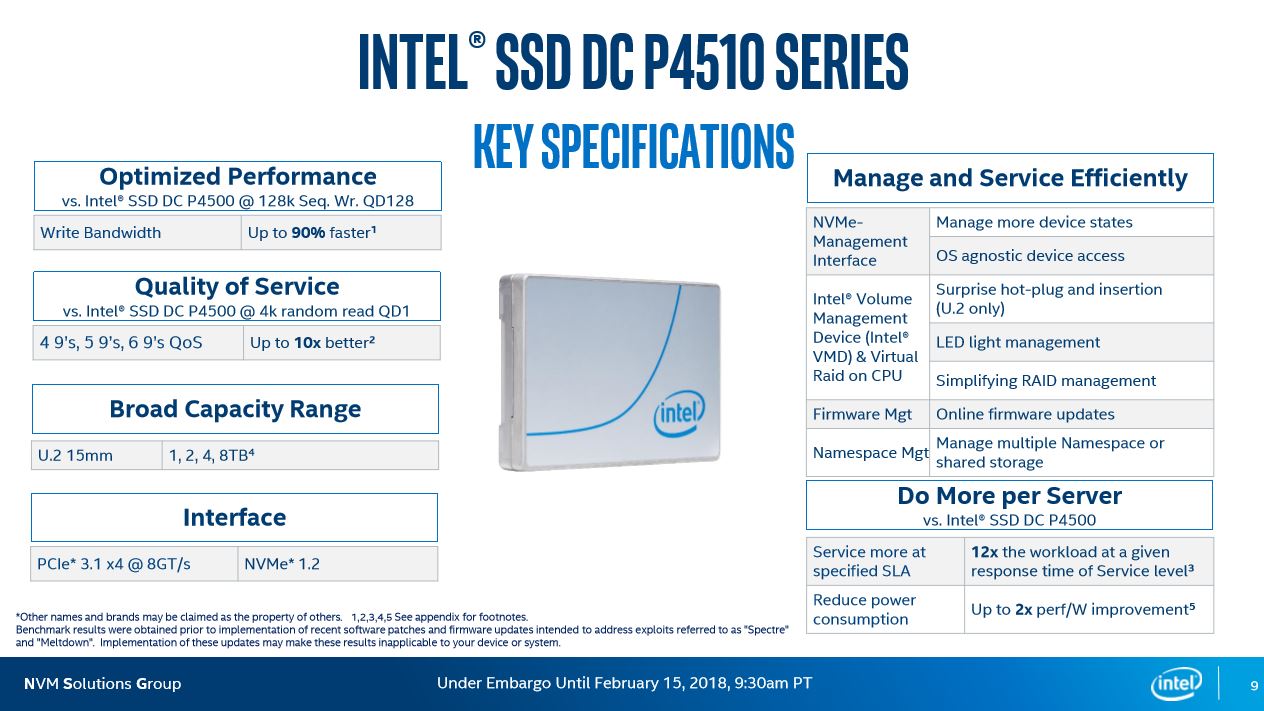

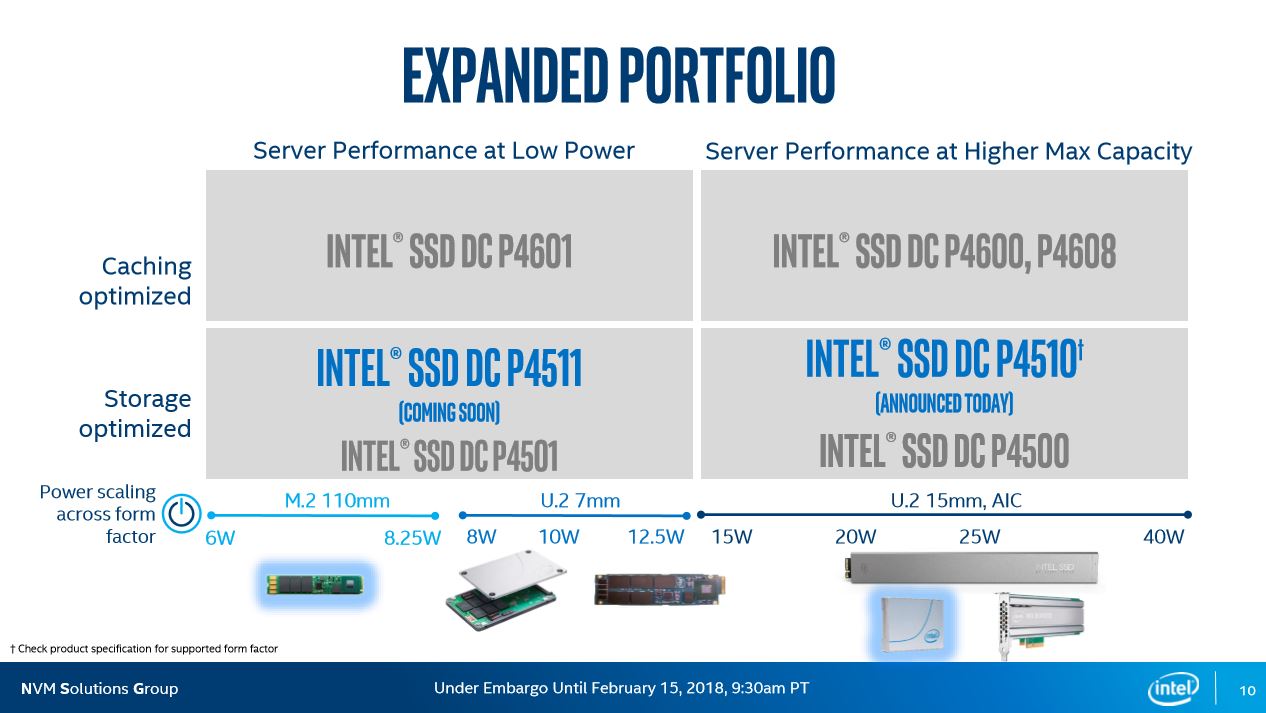
The march of NAND density continues with Intel and Micron's new 64-layer 3D NAND. The new NAND brings about improved density and performance, which Intel put to good use in its new Intel SSD DC P4510 series that comes in capacities up to 8TB. This new series of SSDs is destined for data centers and enterprise use and enables new levels of performance consistency.
The enterprise has shifted from using MLC NAND to more cost-effective TLC NAND, which has proven to be robust enough for tasking workloads. Intel announced its 64-layer TLC NAND back in June 2017, so it's surprising the new enterprise models took this long to make it to market. In either case, the DC P4510 doubles the capacity of the previous-generation DC P4500 and scales from 1TB to 8TB, aided in part by doubled die density. Intel claims the new series offers up to 90% more write bandwidth and up to 10X more performance consistency (QoS).
| Header Cell - Column 0 | Intel DC P4600 | Intel DC P4510 | Intel DC P4500 | Intel DC P3520 | Intel DC P3700 | Intel DC P3608 |
|---|---|---|---|---|---|---|
| Capacity | 1.6/2/3.2/4TB | DC P4510 - 1, 2, 4, 8TBDC P4511 - 1, 2TB | 1/2/4TB | 1/1.2/2/3.2TB | 400/800GB 1.6/2.0TB | 1.6/3.2/4TB |
| NAND | 20nm IMFT 3D TLC NAND | IMFT 64-layer TLC 3D NAND | 20nm IMFT 3D TLC NAND | 20nm IMFT 3D MLC NAND | 20nm MLC NAND | 20nm MLC NAND |
| Random Read IOPS (up to) | 702,000 | 637,000 | 710,000 | 365,000 | 460,000 | 870,000 |
| Random Write IOPS (up to) | 257,000 | 139,500 | 68,000 | 22,000 | 175,000 | 110,000 |
| Sequential Read MBps (up to) | 3,280 | 3,000 | 3,290 | 1,600 | 2,800 | 5,000 |
| Sequential Write MBps (up to) | 2,100 | 3,000 | 1,890 | 1,400 | 2,000 | 2,300 |
| Power Operating/Idle | 9.9/20.7W - Idle ? | ? | 10.9/18.3W - Idle ? | 12/25 - 4W | 25 - 4 W | 25/50 - 8-10 W |
| Form Factor | AIC & U.2 | DC P4510 - U.2, DC P4511 - M.2 | AIC & U.2 | AIC & U.2 | AIC & U.2 | AIC Only |
| Endurance (up to) | 21,700 TBW/4 DWPD | DC P4510 - 13.88 PBW, DC P4511 - 1.95PBW | 4,600 TBW/0.7 DWPD | 2,490 TBW/0.35 DWPD | 43,800 TBW/17 DWPD | 21,900 TBW/3 DWPD |
The DC P4510 series leverages the same Intel proprietary controller that the company uses in the DC P4500. Intel's vertically integrated design employs the company's own NAND, controller, firmware, and components. The fourth-generation Intel controller features 12 channels (four CE per channel), whereas previous-generation controllers employed 18 channels. Paring back the channel count confers reduced power consumption and also yields a net performance gain.
Intel's previous generation included add-in card (AIC) form factors, but the DC P4510 era finds the company abandoning those in favor of the denser 2.5" U.2 and M.2 form factors. These new, denser form factors fit in well with Intel's continued push for SSD-optimized form factors. Intel also made a few minor changes under the hood, such as updating to the PCIe 3.1 and NVMe 1.2 interfaces. The company also added support for the NVMe Management Interface, which ties in well with its VROC (Virtual RAID on CPU) functionality.
The DC P4510 offers up to 3,200/3,000 MB/s of sequential read/write throughput, which represents a small reduction in sequential read performance but a 1.1 GB/s improvement in sequential write speeds. The DC 4510 also offers up to 637,000/139,500 random read/write IOPS, which is another slight reduction in read performance, but more than twice the random write speed. Intel claims the drives also offer twice the performance per Watt. Note, however, that these performance results were generated before the Meltdown and Spectre software and BIOS patches.
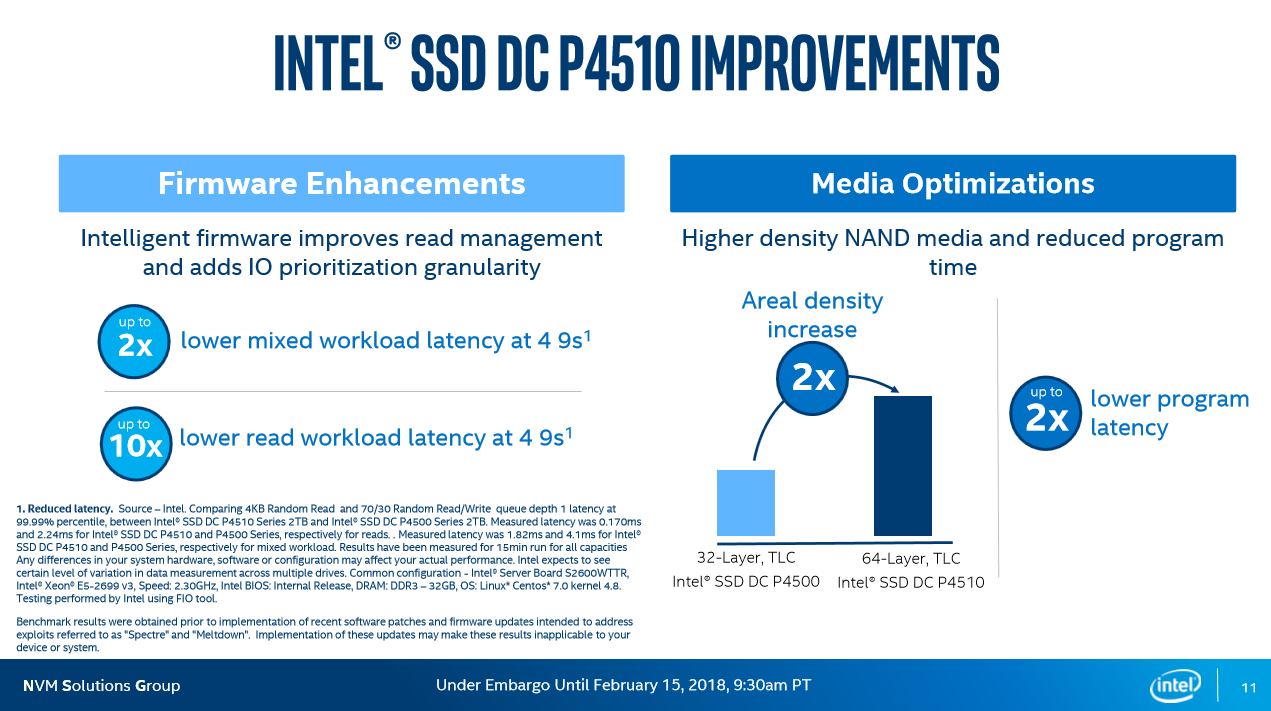

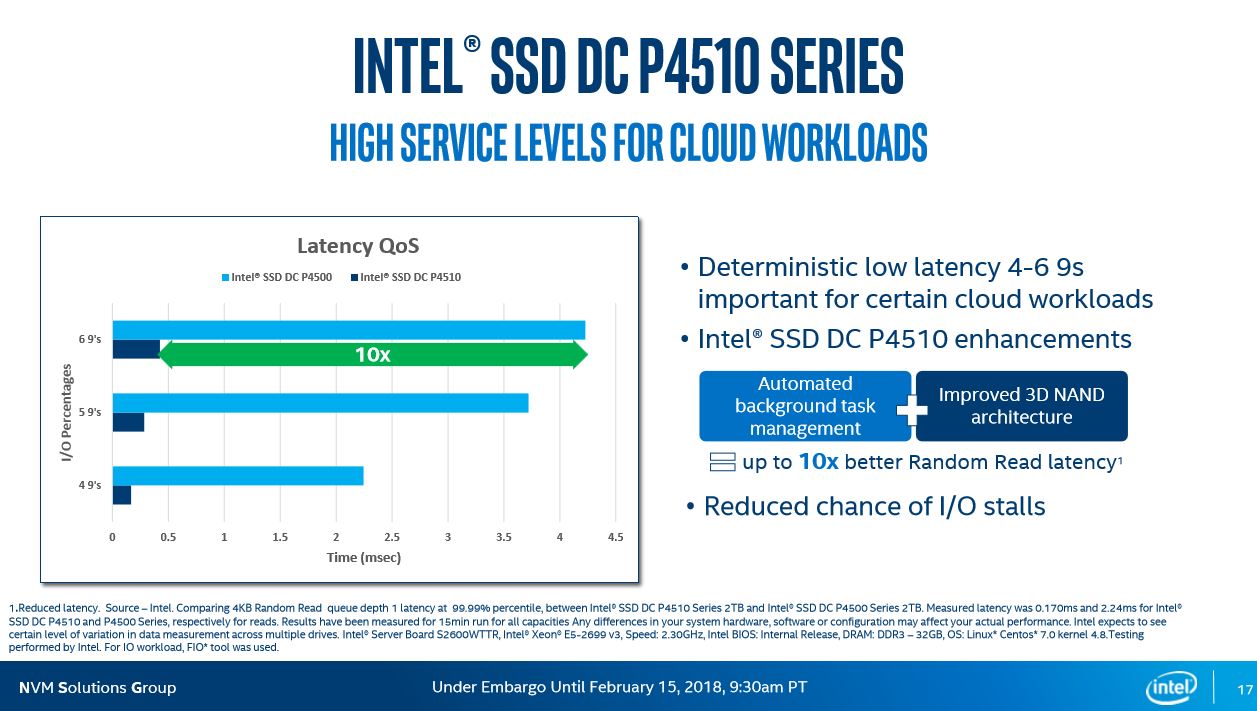

Those performance improvements are borne of a 2x reduction in page program latency. Improved firmware algorithms that prioritize reads over erases/programs also contribute to the 10x improvement in QoS during random read QD1 and mixed workloads. These improvements span up to 99.99th percentile latency measurements. These QoS (Quality of Service) measurements may sound impractical for normal use, but they have a tremendous impact on latency-sensitive applications, such as databases.
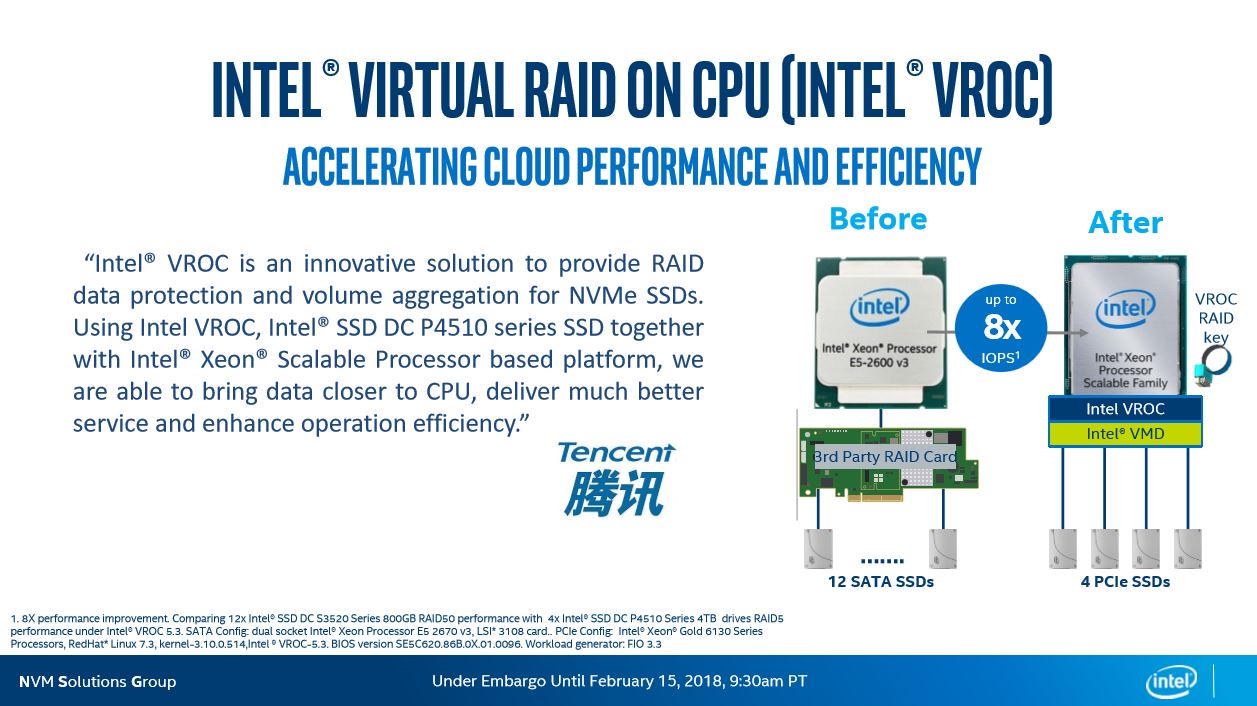
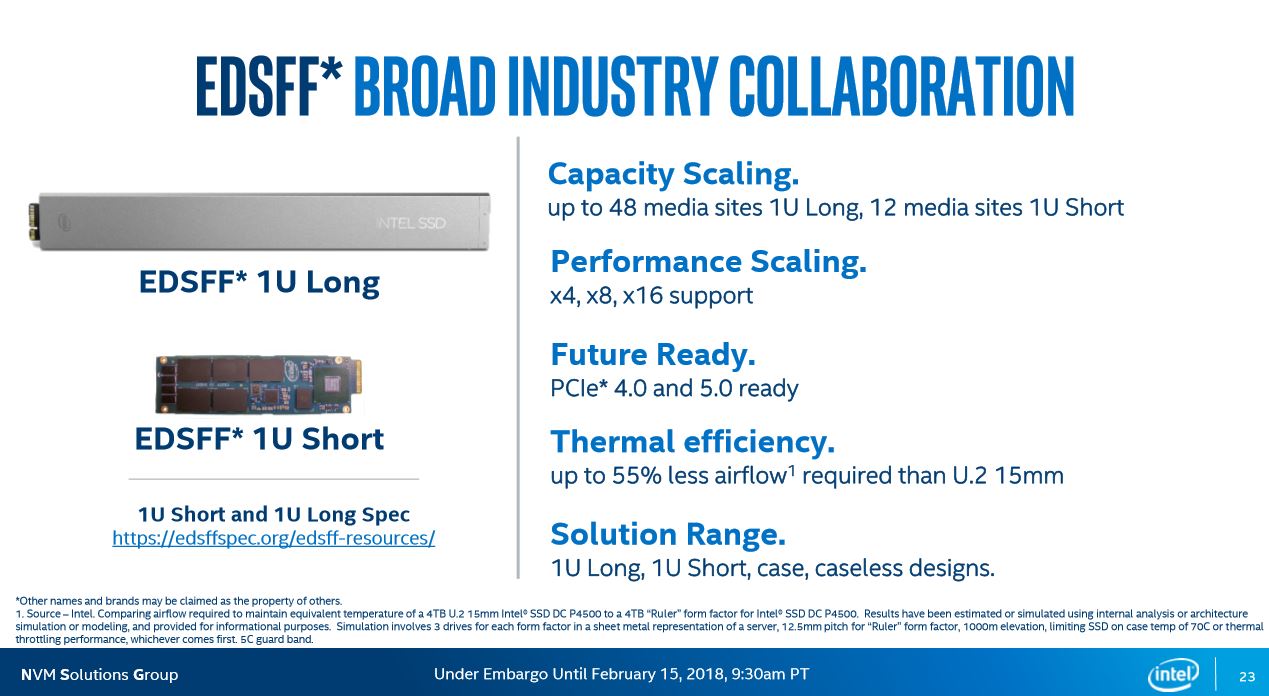
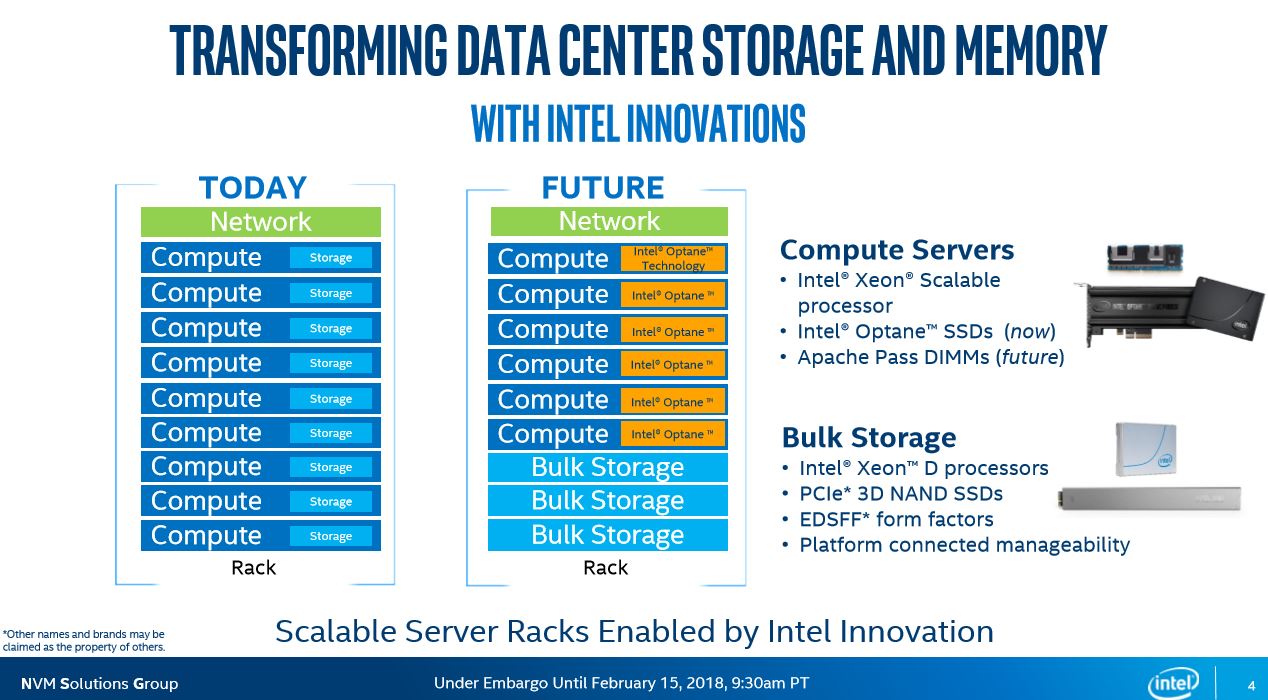
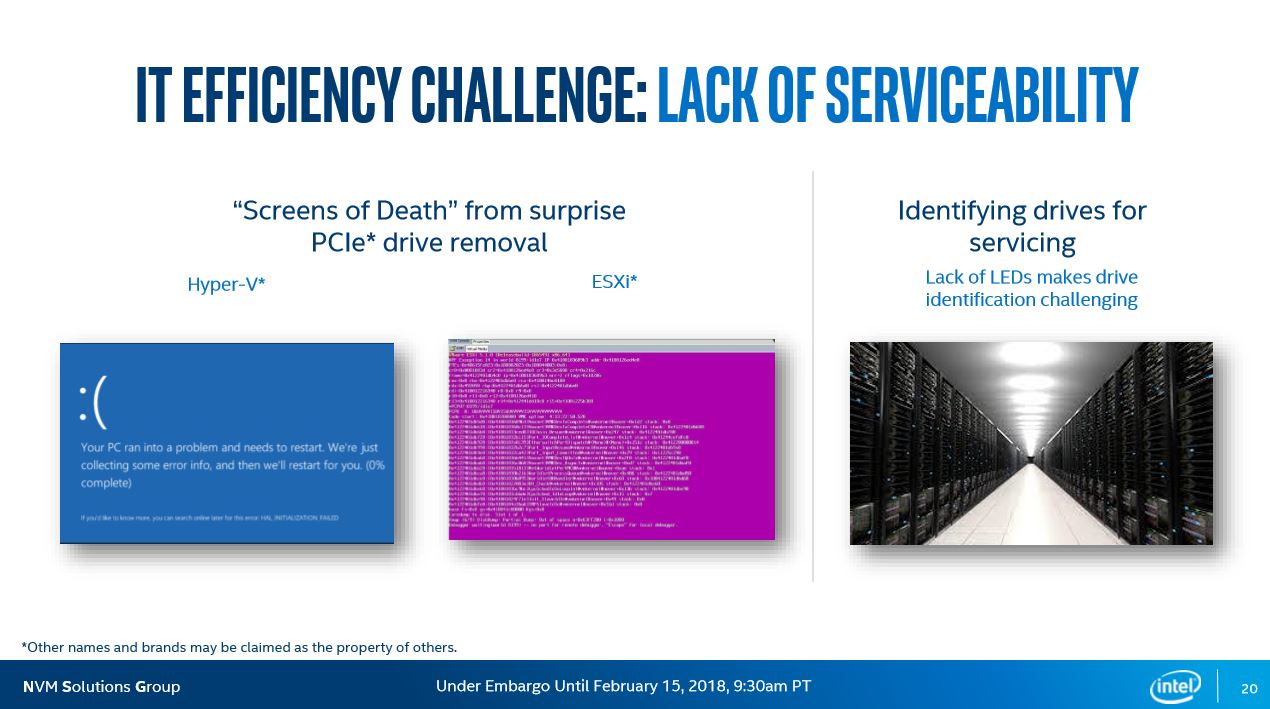
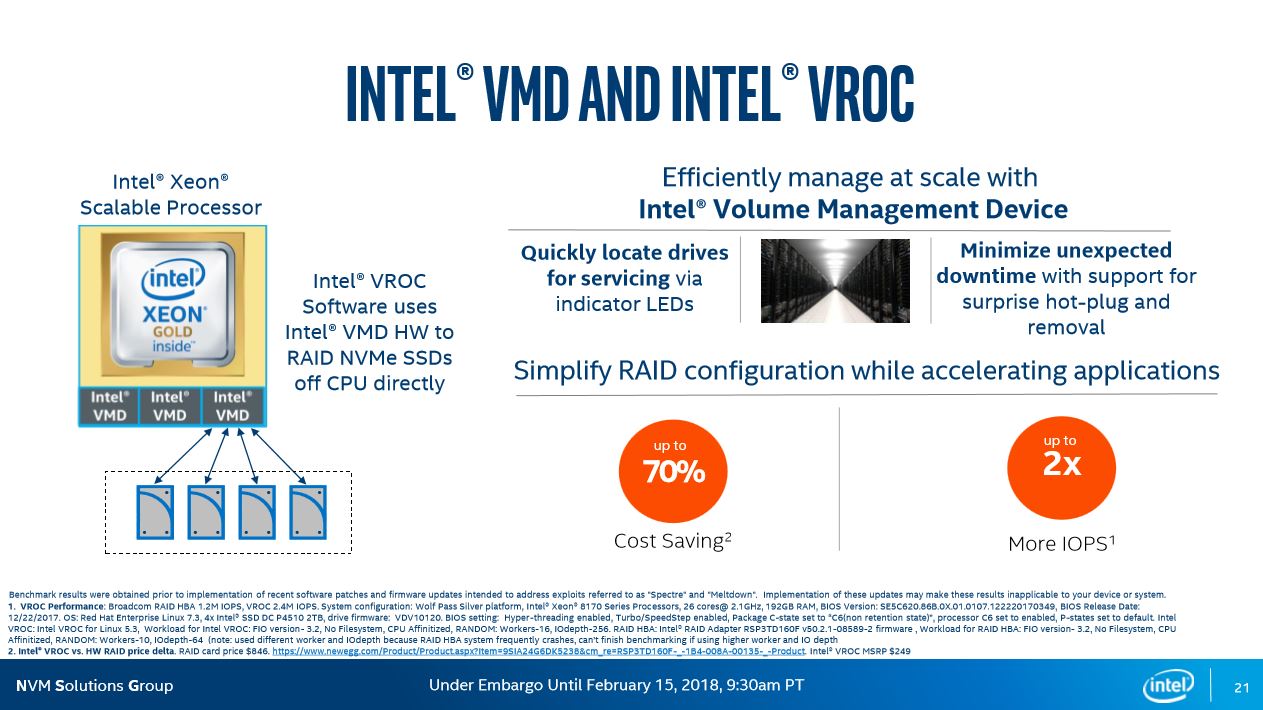
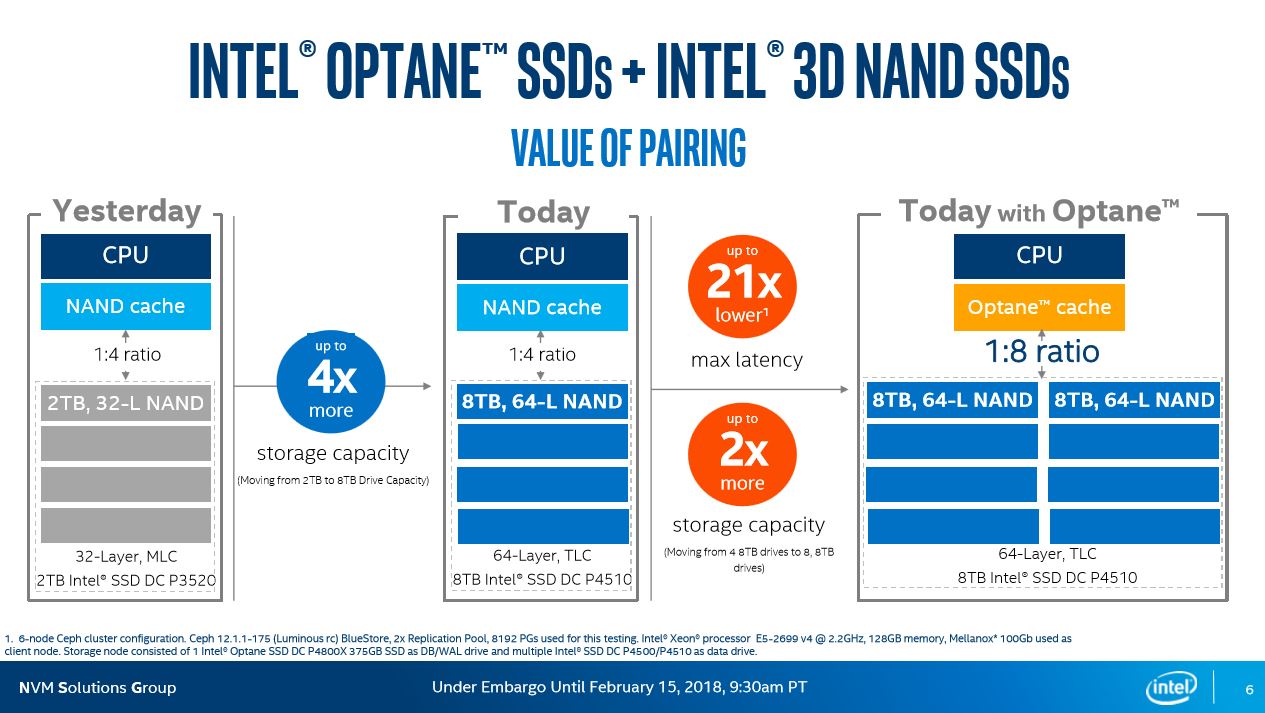
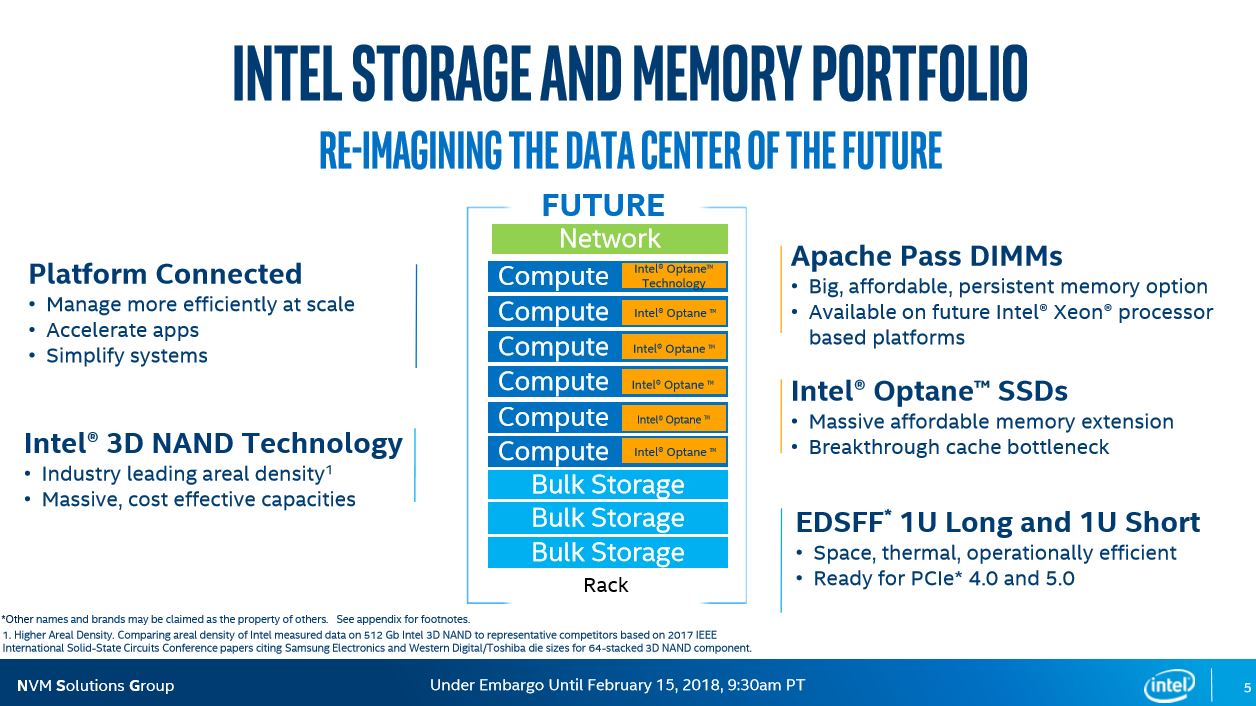
The new series and the underlying principles of denser form factors play into Intel's other initiatives. The company is promoting disaggregated storage architectures that leverage speedy Intel Optane drives as storage pools close to the processor for maximum performance, and then larger bulk storage pools of 3D NAND. Intel is also making more headway with its EDSSF form factor, which was previously known simply as the "Ruler" form factor. Much like the M.2 specification, Intel pioneered this new design and drove it through the standards bodies to make it a standardized offering. It currently supports up to 16 lanes of PCIe 3.0, but it is designed for easy compatibility with PCIe 4.0 and 5.0.
Get Tom's Hardware's best news and in-depth reviews, straight to your inbox.
This new form factor is denser than other alternatives and offers hot-swappability and reduced airflow requirements. Intel foresees models wielding different flavors of 3D NAND or its 3D XPoint. The company already has NAND-based models in deployment with several partners.
Intel also mentioned its Apache Pass Optane DIMMs, which bring 3D XPoint media to the DRAM slot. These new voluminous DIMMs allow for hefty capacities and are accessed as standard DRAM by the system. Years of R&D work have gone into preparing the software and operating systems for persistent memory on the DRAM bus, and now we are finally on the cusp of using those new types of persistent memory on a widespread basis. Intel isn't providing a firm timeline, but the slides indicate the DIMMs will be available on future Intel Xeon processor-based platforms.

Paul Alcorn is the Editor-in-Chief for Tom's Hardware US. He also writes news and reviews on CPUs, storage, and enterprise hardware.
-
Malik 722 pcie 3.1?as far as i remember when i checked it the last time it was still 3.0 standard.Reply -
derekullo As part of an optional test protocol, we are pleased to present an amusing fact: The device is now more valuable than the organs and combined incomes of everyone in .Reply -
fpga123 Why gloss over the over 3 times less endurance rating against P3700. That means the SSD will die 3 times faster! I don't think it will be equivalently 3 times cheaper.Reply